When textile artist Dale Tomlinson first studied with Nancy Crow, everything changed — the ruler went away, and freedom arrived. Since then, Dale has embraced bold color, improvisation, and the joyful engineering of her art quilts.

Tell me about the very first time you knew you wanted to make art with fabric. What do you remember feeling in that moment?
I first studied with Master Artist Nancy Crow in Ohio in April 2011, and it was a watershed experience. I’d been making traditional quilts for a while, but I was getting bored. On the very first day, Nancy told us to put away our rulers — we wouldn’t be needing them. That simple statement changed everything. Suddenly, I saw how quilt-making could be a form of true artistic expression.
That week, surrounded by Nancy and twenty other passionate students, I felt completely energized. When I got home, I couldn’t stop talking about it to anyone who would listen. It was the first time I really thought of myself as an artist — and that realization was absolutely exhilarating.
Where do you find inspiration for your bold colors and strong shapes?
As an Amazon Associate I earn from qualifying purchases. Read more about our affiliate linking policy.
I grew up in Muskoka, Ontario, an area of great beauty. It’s known for its lakes, granite formations and dense woods. That landscape resonates with me still.
I’m drawn to the nostalgia of rural decay. Wooden structures show their fragility once abandoned and start to sag, fall apart, and return to earth. As nature takes over, marvellous wonky shapes and angles appear.
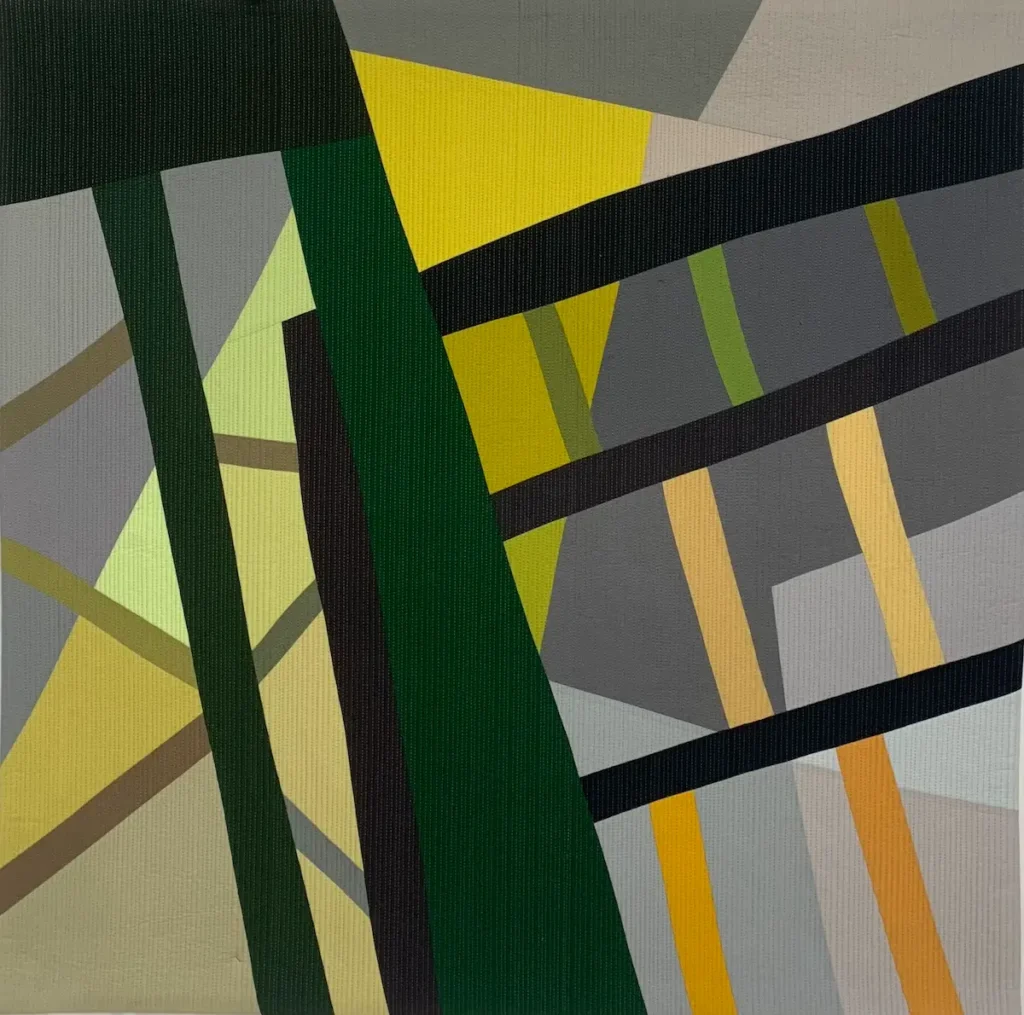
How did leaving your full-time job to become a full-time artist change the way you make art?
It became clear to me that I needed to make a big change if I wanted to give my art the time and attention it deserved. I came to art later in life, and I knew I needed space—to think, observe, experiment, refine my skills, and keep pushing myself creatively.
Having a full-time studio practice allows me to dive deeply into an idea, to spend days exploring and letting a composition evolve naturally without the constant pull of other demands. Stepping away from full-time office work has given me the flexibility to respond to the rhythms of my own life and energy.
Now, when I need a walk to refill my mental image bank, want to visit a gallery, or spend an afternoon reading about other artists, I can. I adjust how I spend my time depending on my energy and focus—and that freedom remains one of the most important and rewarding decisions I’ve ever made.
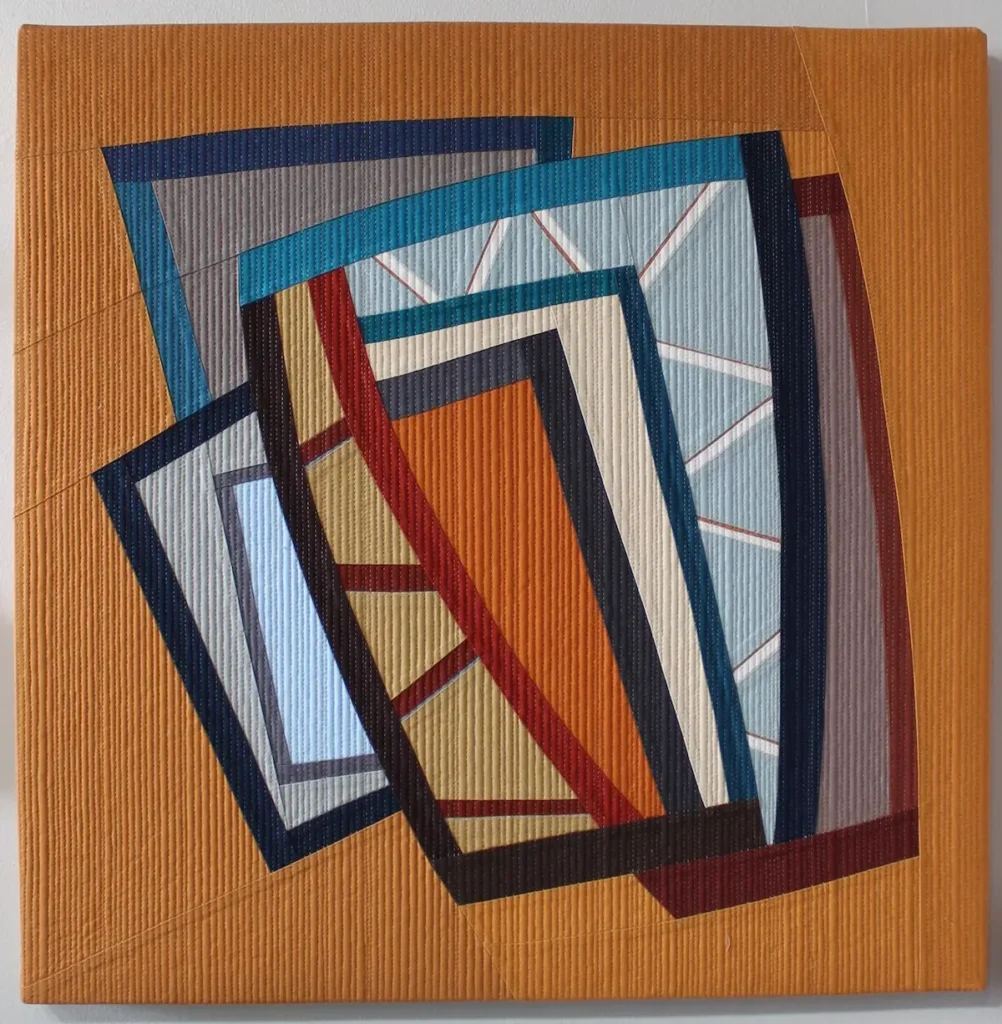
How do you organize your fabrics and materials so you can work freely?
I use mostly solids, so they have privilege of place. I have open shelving so I can see as much as possible.
For the most part, I have my fabrics organized by colour and loosely by value. I still like to play with patterned fabrics, so I have a few large tubs of those to pull out when I want to make something more playful or occasionally to make a functional quilt. Some may think my fabric stash is out of control. I prefer to think of it as carefully curated for endless possibilities.
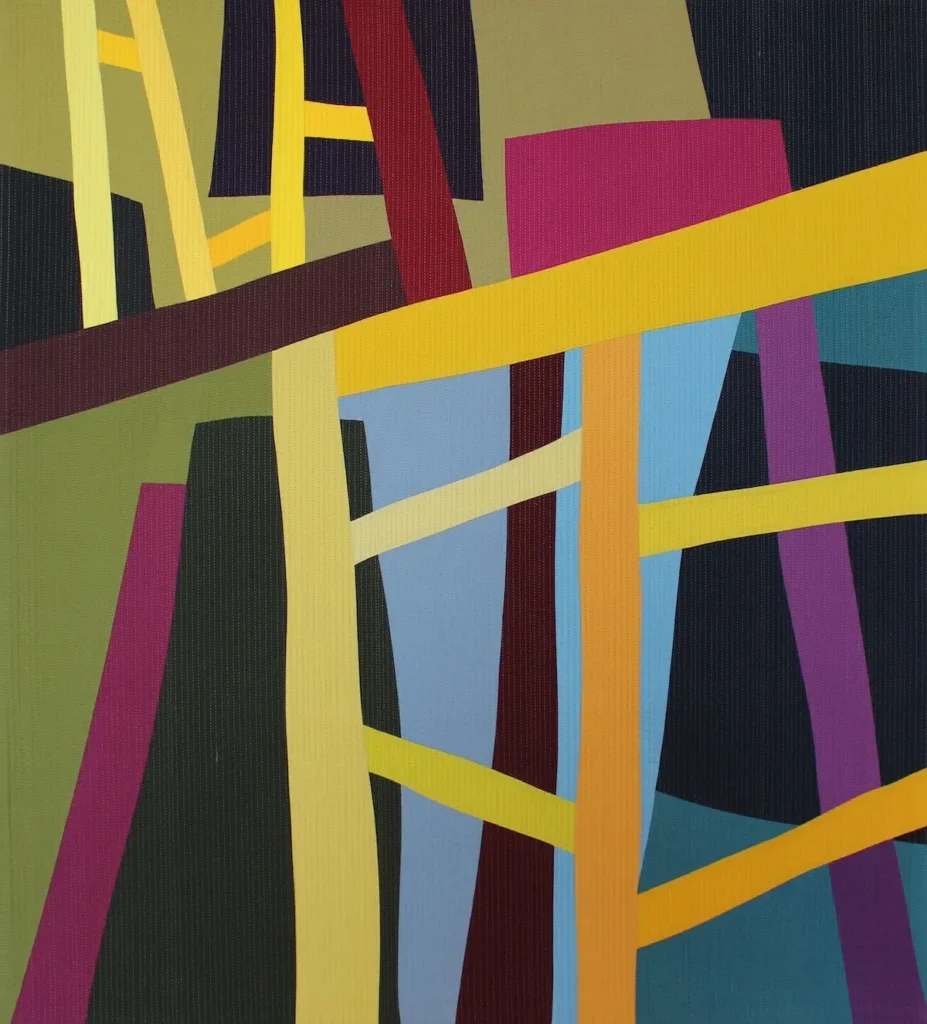
Do you use sketches at any point, or is everything done by eye on the wall?
I sometimes sketch to connect with a sense of play. My sketches rarely end up being directly translated into a composition. I may use them as a starting point. Then, as I cut fabric by eye and play, the composition should and will morph.
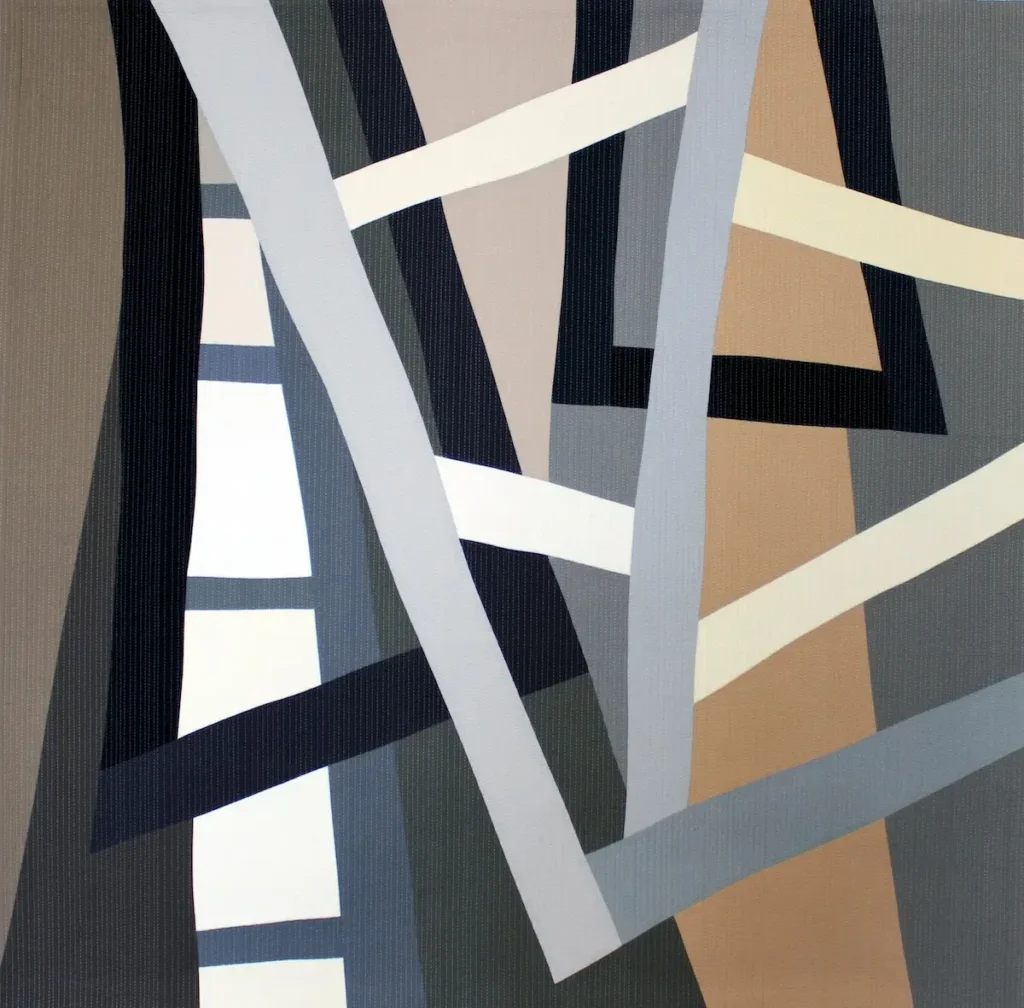
What does improvisation actually feel like when you are at your design wall?
When I’m in flow, improvisation feels easy and incredibly rewarding. Everything just seems to line up—I know exactly what needs to happen next, and I can somehow reach for the right fabric without even thinking about it. I can nail the proportions without re-cutting my shapes and lines. There’s a wonderful energy coursing through me. One shape or line immediately suggests what should happen next. I can feel when something is right. I know instantly when I’ve nailed something. Doubtful thoughts don’t creep in. Everything I have studied and practised comes into play without me consciously evaluating proportion, line, shape, colour, or value.
But it doesn’t always flow. Sometimes ideas come in bursts, with plenty of trial and error in between. I may know something is off, but it can take a while for me to identify and resolve the problem. I have to remind myself to step back and take a break, move on to something else.
Creating space for the art to speak to me is important—whether that means walking away, doing something else for a while, or just coming back to the design wall again and again and experimenting with changes. This can take a lot of discipline and a good dose of optimism that it will all come together.
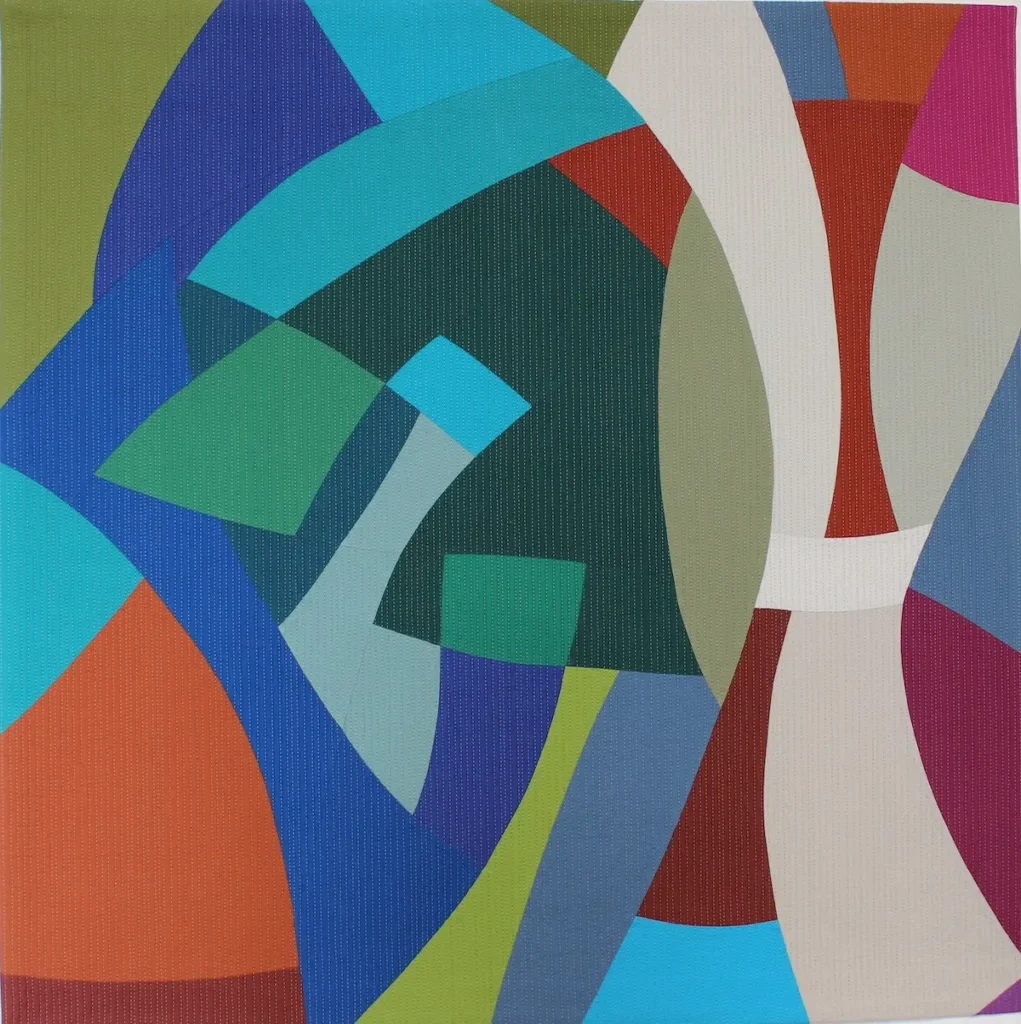
Tell me about the engineering stage, the part where you figure out how to sew everything together. What tricks help you there?
I’ve definitely created designs that were incredibly tricky to sew together. In my early years, there were a few compositions I had to abandon because I just couldn’t find an elegant sewing solution—but now I can usually see the sequence that will make everything come together. I sometimes pin narrow cotton twill tape across the surface to remind myself of the sewing order. I might also print a photo of the work-in-progress and number the sections to guide the assembly.
I avoid seams that won’t hold up under the weight of a quilt hanging on a wall—no Y-seams, please! Instead, I’ll engineer the structure using partial seams when necessary. When precision really matters—especially where multiple angles meet—I mark with chalk and baste just the critical section first. Then I check the alignment, adjust if needed, and only sew the final seam once everything lines up. I often enjoy the problem-solving aspect of constructing my compositions.

What’s your favorite part of the making process — and the part that challenges you most?
I love choosing colours and playing with composition, and I usually enjoy the engineering side of things too. Squaring up isn’t my favourite part, though, and I definitely have to push myself to stay on top of the finishing work.
For my first solo show, I wasn’t yet quilting my own pieces. I had a wonderful long-armer who somehow managed to fit in quilting my work around her own heavy travel schedule. We sent things back and forth in batches So, I might get three or four 80” x 80” pieces in one shipment.
Because I was working under a tight deadline, I had to push myself to sit for days on end doing all the finishing—attaching facings, hanging sleeves, and labels by hand. In small doses, that kind of hand stitching can feel meditative.. But when you’re in a full-on finishing marathon for weeks? One star. Do not recommend.


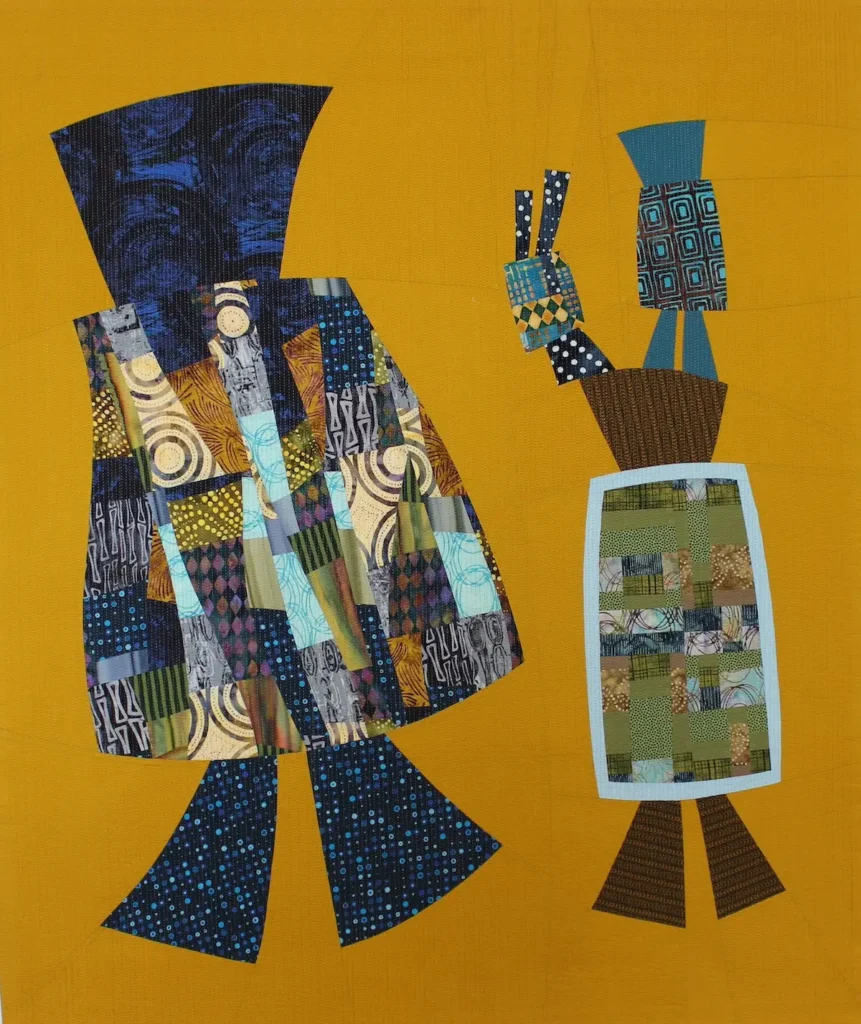
Do you make in a series? If so, what does a series give you that a single piece does not?
I love working in a series when an idea is rich in possibility. It’s exciting to know you can keep exploring without feeling the pressure to fit everything into a single composition.
Once I find an idea that resonates, I can decide which variables to play with—whether it’s colour, scale, value, line, shape, elongation, or something else entirely. Each piece becomes a way to investigate and expand on that central concept.



How did studying with Nancy Crow shape the way you think about design and making?
I had never taken any art classes before studying with Nancy Crow. She opened my eyes to principles of classic art that inform everything I do now. She taught me to see what excellent proportion looks like, to observe closely how the properties of colour can be affected by what you place near them.
I learned how, as a friend said, “value does the work and colour gets the glory” — that you need to think about them both, all the time. Nancy taught me to see. To question. To challenge myself.


Where can people see your work?
To see my work online, you can visit my website at www.daletomlinsonart.com or follow me on Instagram at artcolourquilts. I post images of my work and information on upcoming shows.
I am represented by Britton Gallery in Bracebridge, Ontario and thrilled to be a member of a new artist-run gallery in New York City. Around 30 textile artists have banded together to launch Textile Art Gallery NYC. We plan to open in the Chelsea area early in 2026. As of this writing, the website and social media aren’t yet launched. But please take note of www.textileartgallerynyc.com. If you follow me on Instagram you will see posts about the new gallery once we are up and running. There will be a member group show at least once a year. And I will have joint shows with two fabulous fellow artists about once a year.
Interview posted November 2025
Browse through more inspiring modern quilts on Create Whimsy.

